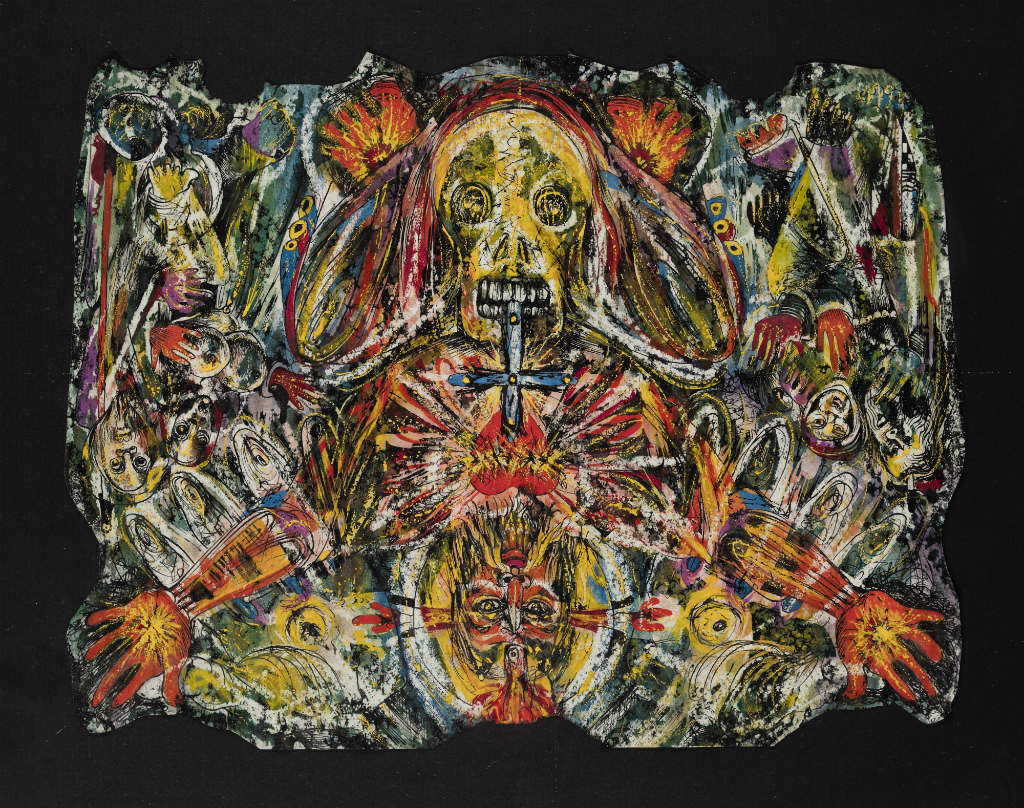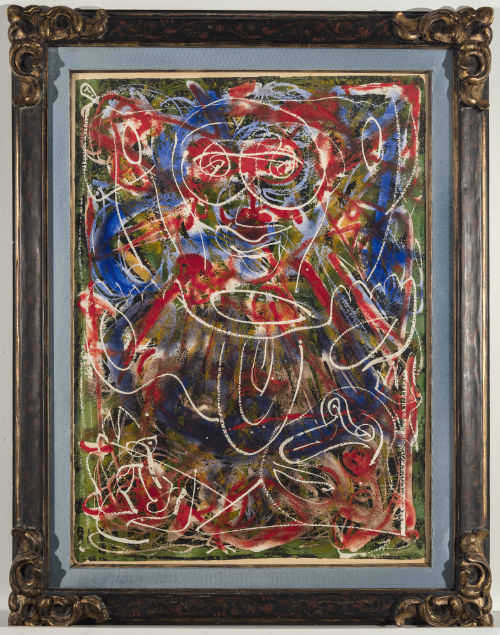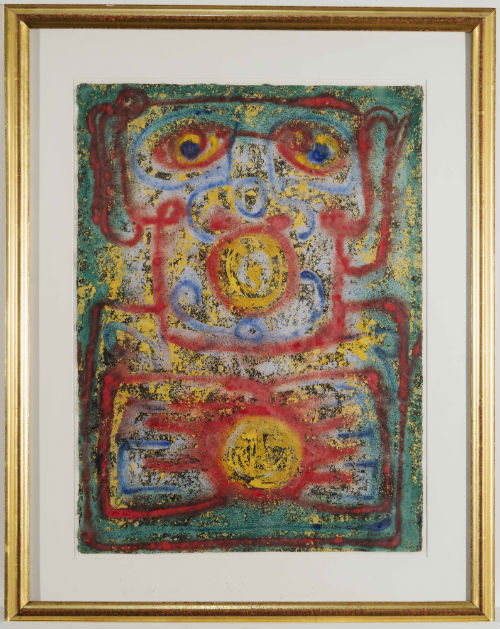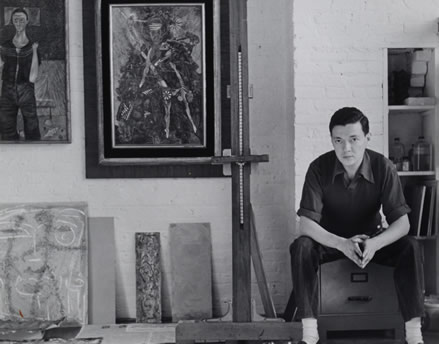We all know Jackson Pollock as the American abstract expressionist painter who liked to energetically throw paint on the canvas instead of applying the paint using a brush. But did you know that Alfonso Yangco Ossorio, a Philippine-born American painter, was as one of his most generous patrons?
Ossorio, born in Manila in 1916, was an abstract expressionist painter whose family owned Victorias Milling Company. With all that money pouring in from the first sugar refinery in central Philippines, the parents of Ossorio were able to send their children to live and study abroad. Alfonso attended private schools in England and the United States, went to Harvard and attended the Rhode Island School of Design.
“As an artist, Mr. Ossorio was a member of the New York School generation and close to several of its members, including Jackson Pollock, Lee Krasner and Clyfford Still,” wrote Grace Glueck in a New York Times obituary.
According to the obit, while Ossorio had started as an abstract expressionist, “in mid-decade, impressed with the deliberately crude materials-conscious work of the French painter Jean Dubuffet, he began the garish collage constructions — he called them congregations — for which he became known.”
Ossorio made art out of “found materials as fake jewels, glass eyes, mirror shards, shells, bones, beads, buttons, plastic waste, antlers, horseshoes and so forth and set into refulgent beds of plastic glue and then richly varnished.”

In a Rogue article, writer Tats Manahan likened the artist to the fictional millionaire Jay Gatsby because of the wya he partied hard at his property in Long Island, New York.
His mansion had “nine fireplaces; a library of 15,000 books; a four-car garage; a 6,000-bottle wine cellar; a studio-theater; a dramatic oval pool; a view of the Atlantic…African masks; carved ivory dragons; Indian temple friezes; Filipino wind chimes; Victorian chandeliers; Oriental carpets; and exotic caged birds”.
Together with Edward “Ted” Dragon, his eccentric life partner, Ossorio ran a larger-than-life salon at the 57-acre estate in the East Hamptons called The Creeks (now owned by Ron Perelman). Their shenanigans are documented in a book called Philistines at the Hedgerow: Passion and Property in the Hamptons by Steven Gaines.
“Mr. Ossorio attracted performers, artists, writers and the like to his home,” wrote Shaye Weaver on 27east.com. “[They] entertained guests such as art critic Harold Rosenberg and artists Max Ernst, Grace Hartigan, Elaine and Willem de Kooning, Robert Gwathmey, Mark Rothko and Robert Dash.”
Ossorio fit right in the high society cloistered at the Hamptons, but he had one painful rich-kid problem — he didn’t have the legitimacy of a starving artist. Thus it was hard for him to be taken seriously by the art world. Still, he continued to live a decadent life where he was rich enough to give a $200 monthly stipend to the then dirt-poor drunkard Jackson Pollock.

Despite Pollock eventually eclipsing Ossorio in terms of fame, Ossorio was eventually recognized as an influential artist. In fact, his works are in the collections of important museums in the United States like the Metropolitan, Museum of Modern Art, Whitney, and Guggenheim.
The market has also been responsive to his works. In Dec 2014, “The Skull” was auctioned for €277,500 (PHP14,410,490.64 at current exchange rate).
Ossorio died of a stroke in 1990, and so if collectors want to come by his artworks, the secondary art market is often where they can get it. That opportunity is being offered by Makati’s Leon Gallery who says it has 16 or more artworks of Ossorio.
The pieces, which range from wax resist on watercolor, mixed media with oil paints, and what the artist liked to call “Congregations” (assemblages where objects are attached to a panel surface), will be on exhibit from Feb. 5 to 22.
Though we requested to see the artworks when we visited the gallery on Jan. 26, we were informed that they were all packed up, and so the grand reveal will only happen during the exhibit’s opening.
After the show, the pieces will not be auctioned off, which is the nature of Leon Gallery’s business. Instead, they will be sold privately. There will also be some pieces in the exhibit that will not be sold; they were loaned for the sake of completing the representation of artworks that the artist made from 1942 to 1983.
When buying from the secondary art market as opposed to getting the art directly from the artist, you must be responsible about investigating the artwork’s authenticity. Jaime Ponce de Leon, owner of Leon Gallery, said that though he did not tap an art expert to issue authentication papers, “the provenance (chronology of ownership of the artwork) will mark its authenticity”.
He said that most of the pieces at the exhibit are from one collector from the United States who De Leon said is a person “very close to Ossorio”. This person will be “disclosed soon, hopefully during the exhibit”, as De Leon wants a “thrilling anticipation” prior to the opening. Aside from this US collector, the exhibit will also have works from two to three foreign collectors, he added.

We also asked De Leon if he approached the Ossorio Foundation, a New York institution established by the late Ted Dragon, who was made heir to Ossorio’s Estate.
De Leon said that the foundation “knows of this collection”, but he did not tap them to issue authentication papers as he is “not aware” that they provide such documents.
Other people vouching for this collection are ladies-who-work-after-lunch Manahan and Lizza Guerrero Nakpil, who will act as the exhibit’s curators. Manahan is the one who’s been obsessed with Ossorio for years and Nakpil was a recent convert. Manahan is also in charge of the restoration of a mural Ossorio made at St Joseph The Worker chapel in his hometown of Victorias.
As to the highlights of the exhibit, Manahan said that the show has three works that were mentioned in Peintures Initiatiques d’Alfonso Ossorio, a monograph written by Jean Dubuffet, a well-known French painter who was also good friends with both Ossorio and Pollock.
There is also another artwork in the exhibit which she said is the study of Ossorio’s chapel mural, dubbed “The Angry Christ.” The work is made of encaustic, watercolor, and ink on paper.
Manahan said that when Ossorio arrived at Victorias (he stayed for 11 months in 1950), he initially did not have his artist papers, so he used Tiffany stationary. His paper eventually came, and guess who it was from? Jackson Pollock.
Another thing that’s interesting about the study is that if you turn it around, there is another figure, said Nakpil, who aside from writing also advises collectors from Asia on what Philippine artworks to purchase. “It gives you an insight to the metaphors he used and did not use in the final product,” she said.
Though De Leon, Manahan, and Nakpil are all vouching for this collection, nothing beats your own knowledge and rigorous research. Getting into the secondary art market is not for newbie collectors but for those who are familiar with the style of the artist and other aspects of his art practice.
Leon Gallery’s Alfonso Ossoro exhibit opens on Feb 5 at G/F Corinthian Plaza, 121 Paseo De Roxas cor Gamboa St, Bgy San Lorenzo, Makati; +63 2 8562781. Daily 9am-7pm.




